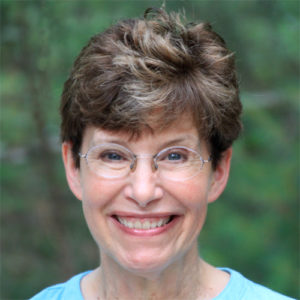Conservation Development – A Better Subdivision Design
When: Monday, July 11 at 7 p.m.
Where: Charlestown Town Hall
What: Town Council meeting to discuss, and possibly vote on, amendments to the Zoning Ordinance proposed by the Charlestown Planning Commission.
The Charlestown Planning Commission has worked with Scott Millar, Senior Policy Analyst at Grow Smart RI and Lorraine Joubert, Program Director at RI NEMO under a Southeast New England Program Network grant to develop Conservation Development regulations for Charlestown.
Conservation development is a type of Cluster Subdivision that prioritizes the protection of natural resources, open space, and agricultural lands.
Rhode Island law gives developers the right to submit applications to subdivide land and create new residential lots. The Charlestown Zoning Ordinance along with the Charlestown Subdivision Regulations defines how many lots can be created and how they can be sited on the land. Conservation Development would allow flexibility to design residential development that protects more natural resources and reduces road lengths to reduce town maintenance costs as well as the developer’s construction costs.
Conservation development encourages a developer to design a more sustainable and resilient residential development pursuant to the policies, goals, and actions regarding resource protection, land use and provision of community services contained in the Charlestown Comprehensive Plan as follows (not listed in any order of priority):
- To protect the quality of the town’s groundwater drinking water sources and surface waters for public health and environmental quality;
- To provide greater design flexibility and efficiency in the siting of services and infrastructure, including the opportunity to reduce length of roads, utility runs and the amount of impervious surfaces required for residential development;
- To allow for and encourage a diversity of lot sizes and housing choices to accommodate a variety of age and income groups, and residential preferences, so that the population diversity of the community may be maintained;
- To more effectively apply low impact development site design and stormwater management practices as the required standard to avoid, reduce and manage runoff to the maximum extent practicable;
- To conserve and link sensitive natural resources, including but not limited to forests, waterbodies, riparian areas, aquifers and habitat areas;
- To develop a greenway system of connected areas of protected open space to be used for passive recreation and wildlife corridors;
- To protect historical and archaeological resources, and to conserve and create scenic views and preserve the rural character of the town;
- To protect existing farms and forests and areas of the town with productive agricultural and forest soils for continued or future agricultural/silvicultural use by conserving blocks of land large enough to allow for efficient farm and forest operations;
- To encourage more sustainable and resilient development;
- To create neighborhoods with direct visual and/or physical access to open space land; and
- To provide for the appropriate management of protected open space.
Just like under the existing Cluster Subdivision ordinance, the number of lots cannot be greater than the number that would be permitted under a conventional subdivision.
The number of lots allowed currently under Cluster Subdivision would be the same number allowed under Conservation Development.
Conservation Development, just like the Cluster Subdivision ordinance, only applies to major subdivisions of six lots or more.
Because a flexible design is allowed under Conservation Design and because, as a result, more open space may be preserved, lot coverages and the percentages of open space set aside for active recreation are adjusted accordingly.
Conservation Design provides that land that is “environmentally disturbed or damaged,” such as, land that has been graveled, needs to be restored to a satisfactory condition.
You can read the full ordinance at the Town’s website.
Town Planner Jane Weidman and consultants Scott Millar and Lorraine Joubert will be in attendance at the meeting to explain the Conservation Development ordinance and regulations.

You can learn more about the author, Planning Commission Chair Ruth Platner, at her profile page.
July 7, 2022 @ 5:26 pm
This is good planning practice as confirmed by Grow Smart RI ( https://growsmartri.org/). The Charlestown Town Council should adopt it at their July11th meeting.
July 7, 2022 @ 7:36 am
I think it is good to have a better subdivision design, but what would be better would be to protect some of these large properties from development entirely. It’s terribly unfortunate that Councilors Carney and Klingler blocked the preservation of the 100-acre Saw Mill Pond Preserve. The town has a $400,000.00 grant from the state that will be forfeited because of these Councilors’ actions. My neighbors got a phone call from one of their group telling them to come to this meeting and rally against the subdivision changes. They don’t want land preservation in any form – as part of open space or even as part of a development.
June 4, 2022 @ 9:45 pm
What a great idea! Thank-you for pursuing it.